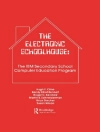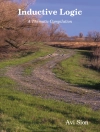‘How you spend your resources really does speak to the ethics, morals, and values about what is important. I use these ideas each day to help schools leverage their resources in strategic and creative ways to meet students′ needs.’
—Mary Nash, Assistant Superintendent
Boston Public Schools, MA
‘A powerful new lens for looking at school resources by fundamentally changing the question from ′How much money do schools need to succeed?′ to ′How well are resources being used to ensure student success?′’
—Richard Murnane, Economist and Professor
Harvard Graduate School of Education
Strategically reorganize school resources to support instructional and performance priorities!
How can schools best use the resources they already have? That question is at the heart of this inspiring book for school and district administrators challenged with increasing student performance without additional funding. Exploring the link between purposeful resource allocation and academic achievement, Karen Hawley Miles and Stephen Frank demonstrate how educational leaders can develop successful and strategic schools by assessing how well they use all available resources—people, time, and money—and by creating effective alternatives to meet goals.
The authors use their extensive research with urban schools and districts to present case studies of schools that successfully reorganized resources to implement the ‘Big 3 Guiding Resource Strategies’: improving teaching quality, creating individual attention, and maximizing academic time. The Strategic School offers planning guides, checklists, worksheets, and strategies aligned with ISLLC standards to help leaders:
- Assess current resource use in new ways that go beyond the typical budget review
- Organize resources more creatively and flexibly
- Craft a master schedule that works
- Connect resource allocation to student and school performance
Tabla de materias
Foreword
Preface
Acknowledgments
About the Authors
Part I. The ‘Big Three’ Guiding Resource Strategies
1. Why Rethink School Resources Now?
2. How Do Resources Matter?
Part II. How Strategic Schools Use People, Time, and Money
3. Investing in Teaching Quality
4. Creating Individual Attention and Personal Learning Environments
5. Maximizing Academic Time and Linking It to Learning Needs
Part III. How to Make the Most of Your School′s People, Time, and Money
6. Tools for Strategic Schools: How Well Does Your School Use People, Time, and Money?
7. How to Group Students and Assign Teachers
8. How to Craft a Master Schedule That Works
9. How to Strategically Improve Teaching Quality
10. Putting It All Together
11. Redefining Systems and Policies to Support Strategic Schools
References
Index
Sobre el autor
Stephen Frank is the cofounder of Education Resource Strategies, a nonprofit corporation that works with urban superintendents across the country to improve student performance through more effective use of resources. He has worked as a consultant with school systems in New York City, Los Angeles, Chicago, Atlanta, Washington DC, Baltimore, Rochester, Albuquerque, and Oakland, among others. Frank has helped create strategic leadership training programs and tools that have been used in principal training programs across the country. He specializes in helping educators better measure how funds travel through school systems; how schools actually use the time, people, and money they receive; and how school system processes must change to improve student performance through using resources more effectively. Frank has worked for global strategy consulting firm Bain & Company, taught at the Terry Sanford Institute of Public Policy at Duke University, and founded and ran a private language school. He is a former Fulbright Fellow.












